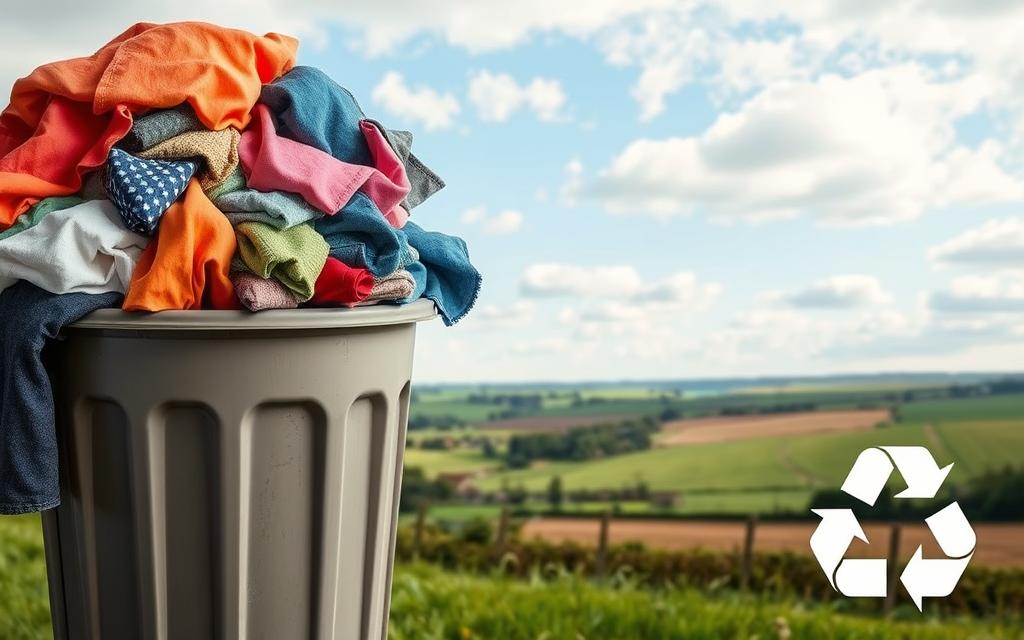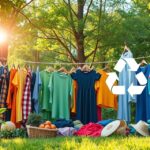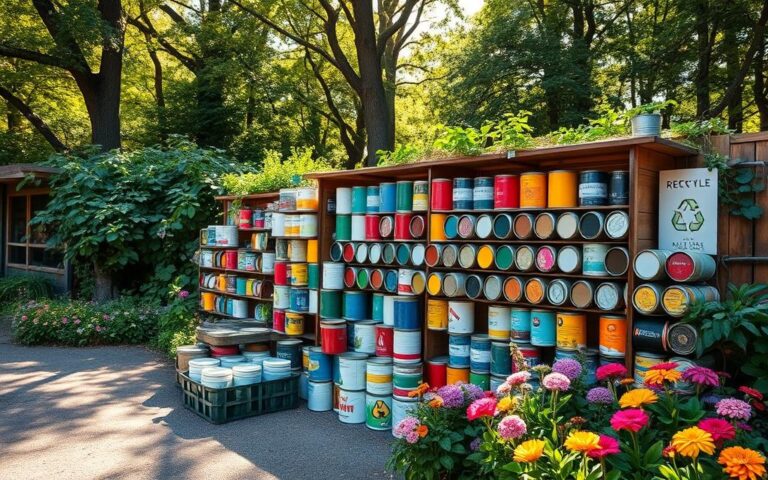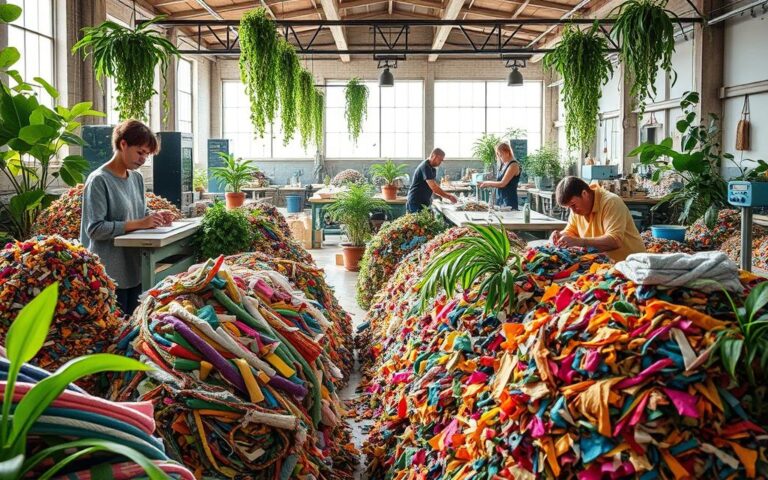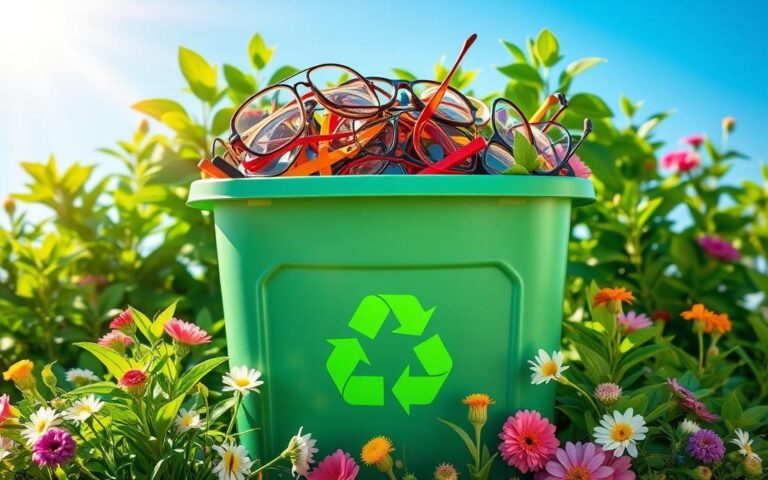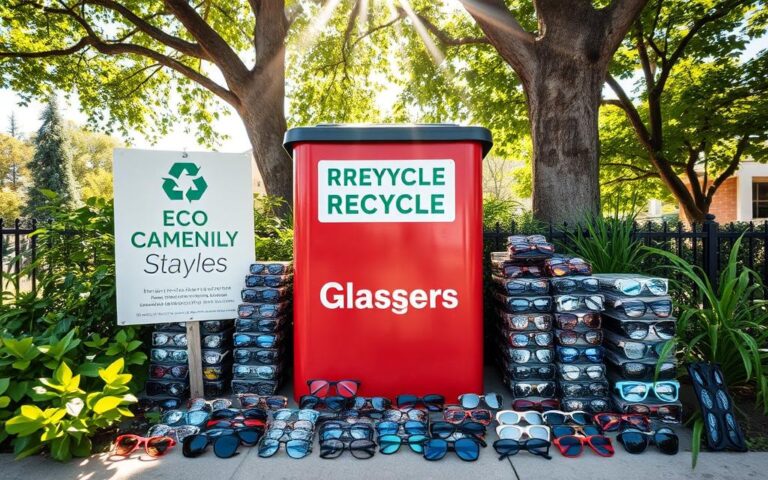Where to Recycle Fabric Scraps in the UK: Sustainable Disposal Options
Sustainability is getting more attention, making it vital to dispose of textiles properly in the UK. Every year, about 1,200,000 tonnes of textiles are thrown away. This shows the huge effect of textile waste on our environment. The fashion industry often burns unsold clothes, adding to the problem. Knowing how to recycle fabric scraps in the UK is important for the planet and for changing how we view fashion and waste.
We can reduce environmental damage by recycling textiles in a sustainable way. This also promotes responsible consumption. With more people sewing and knitting, there’s a bigger chance to recycle fabric scraps responsibly. To make a real difference, we must look into different ways to recycle fabric scraps in the UK. This can help us tackle this issue in a creative and responsible manner.
The Importance of Textile Recycling
The importance of recycling textiles is huge, especially when we think about their effect on the earth. Each year, tons of textiles are thrown away, causing more pollution and wasting resources. The fashion industry is a big part of the problem, creating about 10% of the world’s carbon emissions. This shows we need to change how we handle materials.
The Environmental Impact of Textile Waste
Textile waste is a big environmental problem. It leads to soil and water getting polluted. If not disposed of correctly, textiles can release harmful chemicals. Synthetic fibres take a long time to break down, affecting our oceans and marine life for years. It’s important to manage materials better to protect our planet.
Statistics on Textile Waste in the UK
The UK has shocking textile waste figures, with 1.2 million tonnes thrown away each year. This includes about 350,000 tonnes of clothes, some ending up in landfills. In 2016, people bought 1.13 million tonnes of clothes, which caused 26.2 million tonnes of CO2 emissions. These numbers highlight the urgent need for better recycling to lessen the environmental impact.
Understanding Textile Fibres and Their Recyclability
Knowing about different textile fibres is key for better recycling. Some fibres are easier to recycle than others. This knowledge is useful as the fashion industry grows.
Different Types of Textile Fibres
Textile fibres vary from natural to synthetic, each with its own recycling potential. Among them are:
- Cotton – Easy to recycle, often made into new cotton clothes.
- Wool – Can be recycled well, but must be handled carefully to stay good.
- Polyester – Commonly recycled synthetic fibre. It’s remade from old items into new fabrics.
- Nylon – Recyclable like polyester but harder to process due to its complex makeup.
Challenges in Recycling Blended Textiles
Blended textiles mix different fibres, making recycling tough. The main trouble is separating these fibres. Cotton-polyester blends are especially complex, leading often to their disposal.
Contamination further hinders recyclability, especially with stained or added designs. Solving these issues is crucial for the textile industry’s sustainability, helping reduce waste in landfills.
Where to Recycle Fabric Scraps in the UK
Recycling fabric scraps helps cut down textile waste and supports the planet. There are many ways to get rid of old textiles, from local efforts to groups in your community.
Local Recycling Centres and Community Initiatives
In the UK, local recycling centres play a big role in handling fabric scraps. They work with community groups to spread the word about recycling. This teamwork helps people recycle textiles properly and supports environmental care.
Charity Shops and Donation Options
Giving to charity shops is another way to recycle fabrics. These places take donations to help their causes. But remember, not everything can be reused. Some might be thrown away, so it’s best to give items that are still in good shape. Checking with the charity first ensures your donations really help.
Specialised Textile Recycling Programs
There are special programs for recycling fabric scraps that can’t be given away. They find green ways to deal with these textiles. Now, there are bins everywhere for people to drop off clothes they don’t want. These efforts help our planet by reducing waste and supporting recycling.
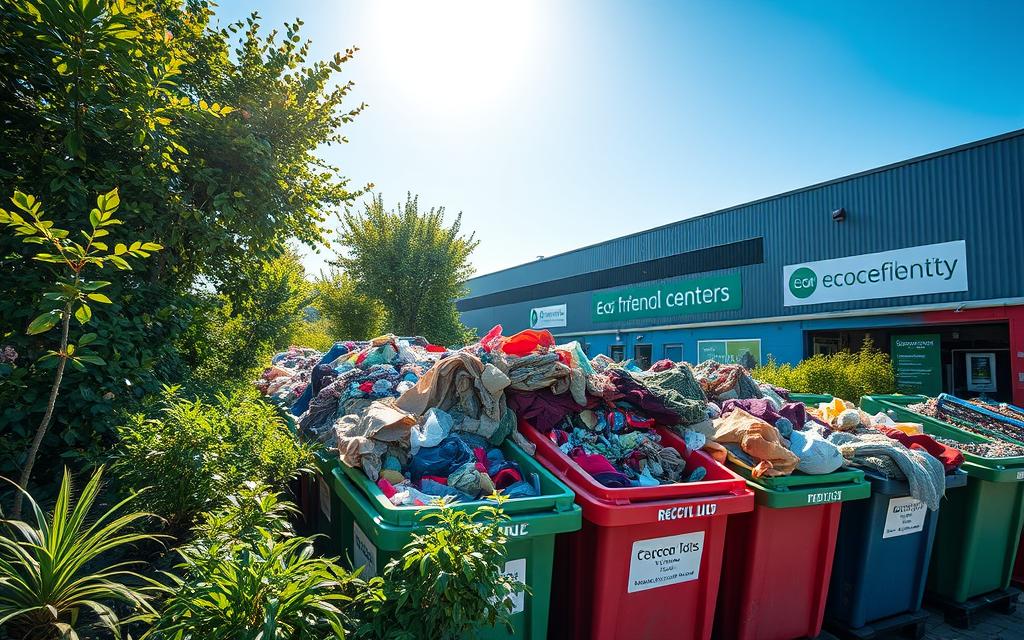
| Recycling Option | Description | Benefits |
|---|---|---|
| Local Recycling Centres | Facilities accepting various textiles for recycling through community collaboration. | Promotes local sustainability; reduces landfill waste. |
| Charity Shops Donations | Donation points for reusable textiles, supporting charitable causes. | Helps those in need; encourages community support. |
| Specialised Textile Recycling Programs | Dedicated programs for unusable textiles focusing on eco-friendly methods. | Aids in responsible disposal; reduces environmental impact. |
Alternative Ways to Dispose of Fabric Scraps
Sustainability is getting more important every day. Looking into new ways to handle fabric scraps is exciting. We’re talking about more than just throwing away old clothes. People are fixing, mending, and changing up their clothes for the better. All these actions make our wardrobes more earth-friendly.
Repairing and Mending Garments
When we fix damaged clothes, we help them last longer. This supports a sustainable way of living. Many local groups and big brands like Patagonia push for visible mending. It’s about fixing clothes in a way that adds to their design. This approach turns torn clothes into special items and cuts down on waste.
Refashioning and Upcycling Ideas
Changing old clothes into new pieces is an exciting process. For example, changing old jeans into cool shorts or making bags from big fabric pieces. Upcycling shows off personal taste while helping the environment. It makes sure fabric scraps are used again instead of being thrown away.
| Method | Description | Environmental Impact |
|---|---|---|
| Fabric Repair | Using sewing methods to fix damaged clothes. | Lowers the amount of waste and helps clothes last longer. |
| Garment Mending | Repairing small damages, such as rips or lost buttons. | Leads to less need for new fabrics by reusing. |
| Refashioning Clothes | Making old clothes into new styles or uses. | Changes how we use textiles, reducing waste. |
| Upcycling Fabric Scraps | Making new things from leftover materials, like bags. | Cuts down on waste, encouraging creative use of textiles. |
By following these methods, people are choosing a more responsible way to enjoy fashion. It cuts down a lot on textile waste. Whether it’s fixing fabrics or turning scraps into new items, every step taken is good for our planet.
Innovative Solutions for Textile Waste Management
Textile waste management is becoming more challenging. New recycling methods are emerging to face these issues. With a focus on technology, collaboration, and changing consumer habits, the UK aims to boost recycling success.
The Future of Textile Recycling in the UK
The future of recycling in the UK is based on building extensive systems. These systems educate people and reward them for disposing of items responsibly. The UKFT’s ACT UK initiative is working on recycling models for non-wearable textiles, a major waste source. Official data highlights a significant interest in textile recycling services, with over 16,831 collections recorded in a week.
Emerging Technologies and Practices
Technology is making textile recycling better. New methods can now separate mixed materials. By using alternatives like plant-based leathers and cellulose fibers, the industry can reduce its environmental impact. Collaborations between companies and authorized waste carriers are key to increasing recycling rates. For comprehensive change, efficient waste disposal services are vital across different sectors, such as factories and fashion brands.
Recycling clothes and textiles is essential to cut down on landfill waste. About 92 million metric tons of fabric end up harming our planet each year. Right now, less than 5% of old shoes are recycled globally. Incorporating sustainable methods into the industry is crucial for a greener future.
Conclusion
It’s crucial to tackle the issue of textile waste for the sake of our planet. In the UK, the textile sector produces around 16 million tonnes of waste yearly. By learning about different textiles and how to dispose of them, we can all help make a difference.
Local projects and new recycling tech offer great chances for giving old clothes a new life. Recycling textiles can create jobs and cut down greenhouse gases by up to 53%. The white paper highlights these points and talks about the importance of working together to recycle better.
With dedication from everyone, we can build a sustainable future in textiles. Treating fabric as a valuable resource and backing recycling schemes can position the UK as a leader in sustainability. This way, we turn waste into something precious.
FAQ
What is textile recycling and why is it important?
Textile recycling turns old fabrics into new products. It is key for sustainability and reduces textile waste’s environmental harm. It cuts down landfill waste, saves resources, and decreases pollution.
How much textile waste is generated in the UK each year?
The UK throws away about 1.2 million tonnes of textiles every year. Out of this, 350,000 tonnes are clothes. This large amount shows we need better ways to handle textile waste.
Where can I recycle fabric scraps in the UK?
You can take fabric scraps to local recycling centres, give them to charity shops, or join textile recycling schemes. There are many community programs aimed at recycling properly.
What types of textile fibres are recyclable?
Recyclable textile fibres include natural ones like cotton and synthetic ones like polyester. Cotton is easier to recycle. Mixed fibres in textiles can make recycling harder.
What challenges are associated with recycling blended textiles?
Blended textiles are hard to recycle economically because separating fibres is complex. Stains or decorations can contaminate them, often leading to disposal in landfills.
Are there alternative methods to dispose of fabric scraps besides recycling?
Besides recycling, you can repair or transform clothes into new pieces. These actions help lessen waste and promote a creative, sustainable approach to fashion.
What innovative solutions are being developed for textile waste management?
New solutions include projects like the UKFT’s ACT UK. This project works on recycling non-wearable textiles on a large scale. Tech advancements also aim to better recycle mixed materials and lessen harm to the environment.
How can individuals contribute to textile recycling efforts?
By repairing instead of throwing away, supporting recycling projects, and choosing what to buy carefully, we can all help. Every effort helps reduce waste and protect our planet.

